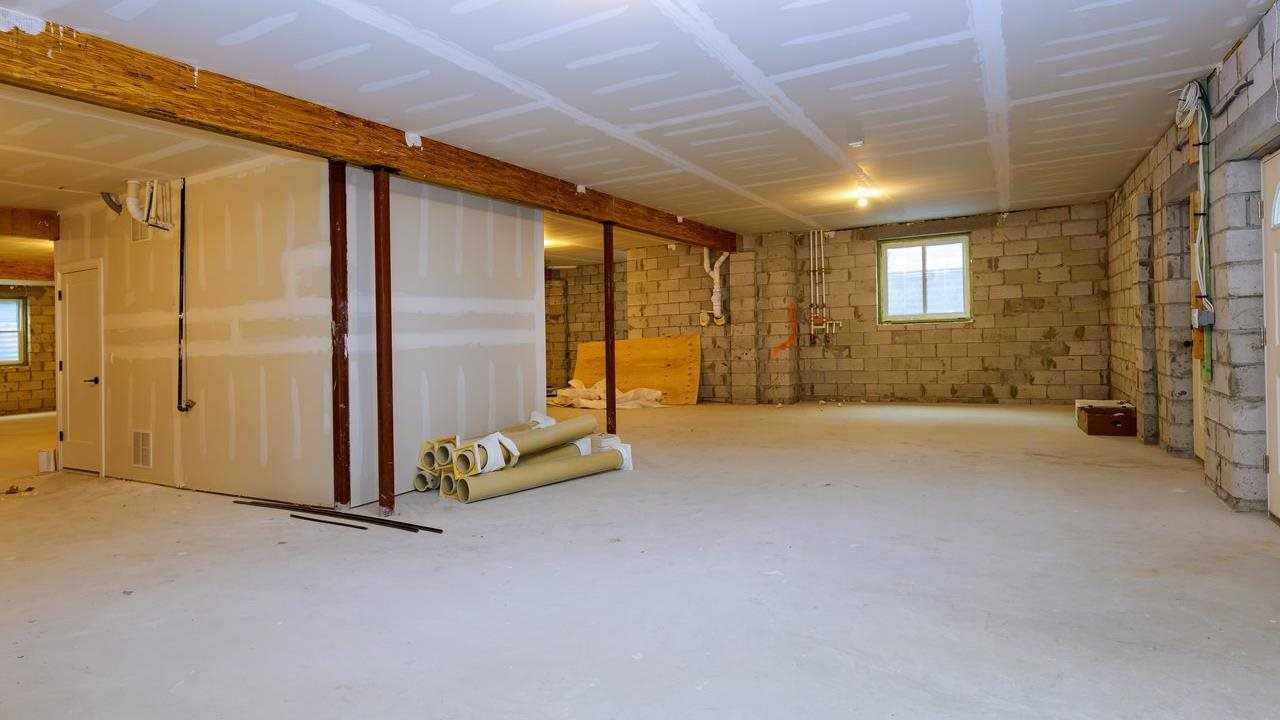
(BPT) – Stuck indoors? Winter is the perfect time to address indoor issues that affect the functionality, safety, appearance and value of your home. One great example: A basement or other room with unlevel flooring, new concrete floors or pre-cast slabs with unacceptable finishes — or existing concrete floors with damaged finishes.
While it may seem daunting, you don’t have to undergo major demo like demolishing the existing concrete slab to achieve a safe, even floor. You can repair the surface and correct sloping so your floor will be more usable just as it is, or in preparation for ceramic tile, resilient flooring, carpet or some other finish.
Uneven flooring solutions
Conquering concrete flooring problems is simple if you use QUIKRETE® Fast-Setting Self-Leveling Floor Resurfacer. Pros and DIYers alike can use this product to resurface most floors with a single application, creating a smooth, level surface to improve your basement or other room. Even better, you can tackle this project over the course of a single weekend, given the right conditions. You can even use it for leveling areas like patios — when the outside temperature is above freezing.
Prepping to level your floor
Before starting, you’ll want to check the temperature of the work area and the amount of slope — plus make sure the floor doesn’t need any damage repair.
Damage assessment: Large cracks, holes or other damage may require repair before resurfacing. Repair holes that are deeper than 1 inch and deeper than one-half inch with an area greater than 6 inches. For deep cracks (more than 5/8 of an inch deep) or large chunks of floor, you can use a fast-set repair mortar and cure such as QUIKRETE® FastSet Repair Mortar before resurfacing, following the product instructions. Smaller cracks are no problem — the floor resurfacer will easily fill small hairline cracks.
Evaluate the slope: Use a level to determine how much the floor is actually sloping. You can apply up to 5/8 of an inch of lift — but not more than that — in a single application. If your floor has a larger slope, you’ll want to use more than one application to level the area completely.
Check your temp: You can use QUIKRETE Fast-Setting Self-Leveling Floor Resurfacer at any temperature above freezing. However, for best results, the temperature should be at least 45 degrees Fahrenheit. Colder temps will slow down the setting time for the product, although it does still set faster than typical resurfacing products.
Ready, set, level up!
First, make sure you have everything you need: QUIKRETE Fast-Setting Self-Leveling Floor Resurfacer, a heavy-duty drill with a paddle mixer, water, a 5-gallon bucket, impervious gloves such as nitrile, safety glasses and QUIKRETE® Concrete Bonding Adhesive. The resurfacing product is self-leveling, so no trowel will be needed. Make sure to follow all instructions and safety precautions and the products, and wear impervious gloves such as nitrile throughout the process.
Instructions
Clean and prime: All surfaces must be completely clean and free of foreign substances including dirt, dust, oil, grease and paint. After cleaning, you’ll need to prime the clean, dry floor surface with diluted QUIKRETE Concrete Bonding Adhesive. Follow the product’s instructions for use and allow enough time to dry. The bonding adhesive should be dry to the touch (which takes about 1-2 hours, depending on the environmental conditions in the space) before you begin using the resurfacer.
Apply resurfacer: Mix resurfacer with water according to the product instructions. Starting in the center of the space, pour the material directly from the mixing container in continuous strips about 1 foot wide across the narrow section of the application area. Placing should be done as one continuous operation, with no screeding or troweling necessary.
The mixed material will remain fluid for approximately 20 minutes, and it will level itself to a smooth surface. Pour the next strip adjacent to the edge of the previously placed material. The adjacent strips should be poured within 15-20 minutes to ensure a smooth, continuous surface. Continue to work without breaks until the entire application area is covered. The product usually sets in 3-4 hours, depending on conditions.
Allow resurfacer to cure: Curing time varies, depending on area conditions. During the first 24 hours, keep the area covered or damp to prevent excessive loss of water, which can cause cracking. You can also use QUIKRETE® Acrylic Concrete Cure & Seal, plastic sheeting or the application of a very fine fog spray of water to help prevent shrinkage cracking.
The result? Smooth, safe, level floors that look great and are much more functional. Improving the condition of your flooring will help you make the most of your home’s underused basement or other spaces.
Learn more about this product and other great ideas for DIY projects in your home at Quikrete.com.
